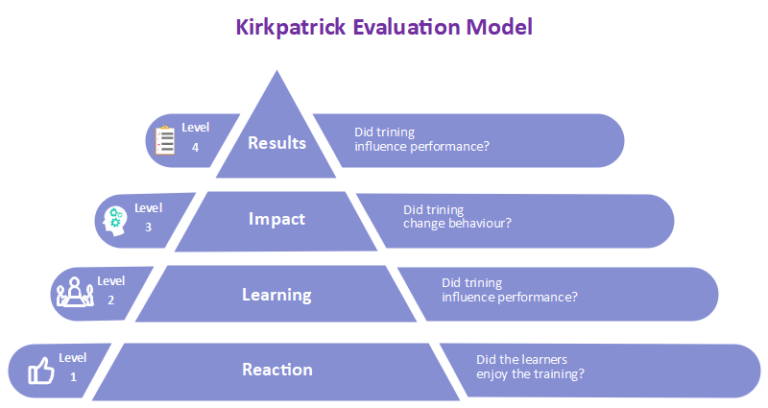Why measure employee training effectiveness?
Given that U.S. training expenditures passed the $100 billion-mark for the first time in 2022, it’s essential to measure employee training effectiveness to ensure that your training programs are achieving their intended goals.
Let’s start with why you’d want to train your employees?
Building a learning culture means greater innovation, increased ability to respond to customer needs, and increased productivity. Learning aligned with organizational goals is going to improve company processes and create both a stronger brand as well as potential competitive advantage in the marketplace.
But from an employee perspective, it’s also likely to lead to great employee experience, increased motivation, and performance.
IBM found that only 21% of new hires intend to stay at an organization that doesn’t offer training compared to 62% of new employees who do have access to ongoing training.
With an increasing number of employees citing learning and development as a priority in job satisfaction, employee training is likely to be a big part of your talent retention strategy.
What Key performance indicators (KPI's) should you consider?
So, learning is important, but how do you measure it?
And, more importantly, make it easy to measure when time is of the essence in today’s context.
There is likely to be a mix of short and long-term learning KPIs you want to consider when you measure employee training effectiveness.
These include;
- Learning outcomes I.e. Knowledge And Skill Retention Assess changes in knowledge through quizzes, tests, or assignments.
- The time cost of onboarding new team members
- Team member’s key job performance indicators
- Employee retention rate – employee training, employee retention, and turnover rates.
- Organizational metrics, including net promoter score
At the end of the day, you’ll want to quantify ROI and Calculate the return on investment (ROI) by comparing the costs of the training to the benefits gained (increased productivity, reduced errors, etc.).
What are the steps in measuring employee training effectiveness?
1. Set Clear Goals for Training
Before considering KPI’s, it’s imperative to consider the goals for new hires and their journey within the organization. These goals help employees understand what they’re expected to learn and help the business develop a learning journey.
Aptitude tests such as the Saville test help evaluate whether new hires possess the specific skills, knowledge, and abilities required for their roles.
Defining Specific Learning Targets
The first step in this process is to establish specific learning goals for each job role. What important skills and things should finish their training? Having these specific targets in place makes it easier to test. Whether the training is fulfilling its intended purpose?
Aligning Training Goals with Company Objectives
It’s essential to ensure that the goals align with the broader objectives of the company. Effective training is one which matches the company’s goals and objectives. Such training helps the company be successful.
2. List KPI's and measure time to skill
Once you’ve set goals for learning and aligned them with company objectives, you’ll need to set the specific KPIs that are relevant to your company and the specific team member.
In the case of employee onboarding, a useful way to see if onboarding and subsequent training are working is by checking how long it takes for new employees to get good at their jobs.
Define Skill Benchmarks
Establish clear skill benchmarks for each role within the organization. These benchmarks can be things like specific job duties, how much work someone does, or important ways we measure how well they’re doing their job. Defining what skill means in concrete terms provides a clear yardstick for assessment.
3. Utilize technology with analytics for training
It’s easy to see why top teams utilize technology for team training.
But delivery of training is just one aspect of training technology.
As mentioned in the KPI’s above, it’s important to be able to evaluate;
- Knowledge retained
- Knowledge gaps that still remain
- Whether specific knowledge has been accessed
Ideally, you’re going to want to be able to accurately access the ROI of training and its impact on the business. In the case of utilizing a tool like Whale for training, your costs are most likely to be lower, and you’ll be more able to calculate the impact effectively.
4. Get Feedback
To assess the effectiveness of training, it is important to get feedback. Regular feedback and evaluation provide valuable insights into the effectiveness of training.
Solicit Feedback from New Employees
After training, it’s important to seek feedback from team members. This is over and above utilizing things like quizzes to asses whether knowledge has been retained.
This is about the qualitative experience of the training.
Ask team members if training materials were easy to understand and if they have suggested areas for improvement. Their feedback helps in understanding the training’s strengths and weaknesses to continuously improve the training experience.
5. Continuously update and improve
It’s no secret that employee retention rates are related to employee training.
The correlation between learning and retention is quite astonishing – According to LinkedIn’s 2023 Workplace Learning Report, one of the top 5 factors that employees consider when they’re looking for a new job is the opportunity to learn and develop new skills.
The more you update and continuously improve your employee training, the more likely you’re going to retain top talent.
Future-Ready HR:
A Guide to Using AI and Automation for Training

We interviewed the top human resource experts to discover AI and HR trends for the future.
Download the whitepaper to discover how AI and automation can revolutionize onboarding and training, empowering you to develop a future-ready workforce today!
How to put employee training measurement into practice?
During the 1950s, the University of Wisconsin Professor Donald Kirkpatrick developed the Kirkpatrick Evaluation Model for evaluating training, which is still relevant today.
Level 1 - Reaction
This level measures how team members directly respond to training and determine any gaps in the training content.
Qualitative and quantitative metrics to consider
- Was the course content relevant and easy to follow?
- Was the training was able to accommodate the learner’s pace and learning style?
How to measure?
Use feedback forms and / or comments.
Level 2 - Learning
Measure the knowledge and skills gained by learners to see if the training met it’s objectives. Use a combination of metrics including;
- Influence on performance KPIs
- Quizz Test scores after the training
- Training completion
How to measure?
Use quiz scores and hiring manager feedback from performance reviews
Level 3 - Behavior
At this level it’s all about how the training has influenced the learner’s performance and delivery. Consider metrics such as;
- Self-assessment questionnaires
- Informal feedback from peers and managers
- Job performance KPIs
- Customer surveys, comments, or complaints
How to measure?
Use self-assessment questionnaires and customer surveys.
Level 4 - Results
Level 4 is all about business results and output. Key metrics to measure are:
- Improved business results
- Increased productivity and quality of work
- Employee retention
- Customer satisfaction and success
How to measure?
Measure ramp-up time of new team members, project delivery rate, staff retention and company cost savings.
How to improve employee training effectiveness?
Before you start trying to improve employee training effectiveness, you need to define your objectives. What are you trying to achieve with your training?
You may want to utilize tools such as aptitude tests to
Once you know what you want to achieve, you’ll be able to improve your training effectiveness.
Build a knowledge base
According to the “Forgetting Curve”, we forget two-thirds of knowledge after a day. You can’t train team members once off and expect them to remember what they learned. For this reason, it’s essential to document processes to build a collaborative knowledge base that can be accessed as and when needed.
Utilize contextual learning
Contextual learning is about training your team members on real-world situations. You can’t get more real than your company’s SOPs and company documentation. Align learning with team members’ daily tasks and ensure that information can be accessed by everyone irrespective of location and within the apps in which they work.
Make Netflix your guiding star
200 page manuals are so 1980’s and no one is going to read them!
Use The Netflix effect to create engaging content that team members really want to watch and read.
Choose the right software tools
Choose the right employee training software to help you create learning that is aligned to your organization’s key objectives and processes and that enables you to track progress.
Bottom Line - Your employee training effectiveness checklist
Remember that measuring employee training effectiveness is an ongoing process and part of creating a learning culture.
Use the following checklist to help you measure employee training;
✔️ We see training as an investment and integral part of our daily operations and our culture
✔️ Employee training has been adapted from the business processes
✔️ We have KPI’s in place for employees
✔️ We have KPIs in place for the business
✔️ Employees have feedback into training
✔️ Measuring employee training effectiveness happens at regular intervals
✔️ We have a feedback loop to ensure that training is reviewed and updated
✔️ We have employee training software in place which provides both the training and metrics needed
✔️ We know how to prove the return on investment from training
Regularly assessing, analyzing, and adapting your measurement methods based on feedback and outcomes will help you refine your training initiatives and maximize their impact on employee performance and organizational success.











